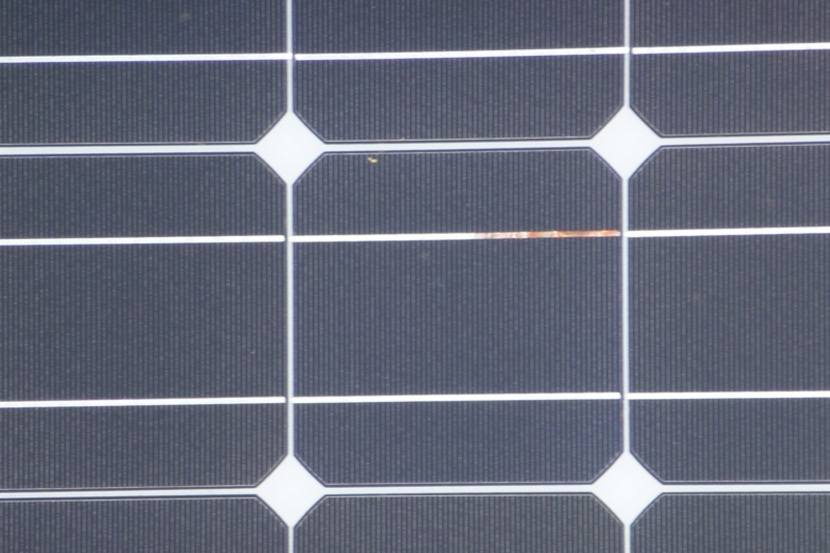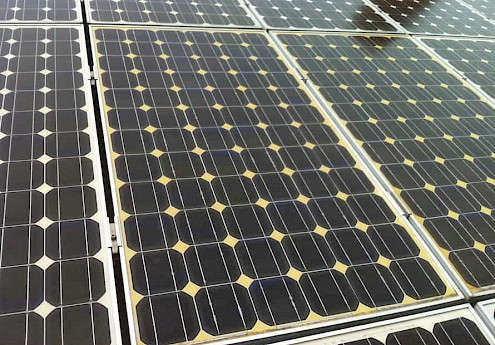
Error pattern: burn marks on the front of the module
Where do burn marks develop?
Burn marks can appear on the entire surface of solar modules for a various number of reasons. Crystalline phovoltaic modules consist of solar cells that are connected to one another in series using busbars. These strings are soldered to a conductive tape that conducts electricity to the junction box. The cells are then embedded between two foils and processed into a laminate with the front glass. If the module gets too hot at one point, the embedding foil can become discolored.
How can burn marks in the solar module be detected?
The burn marks appear in a typical brownish-black discoloration. They can be seen with the naked eye and can indicate heat build-up in the solar module.
What are the causes of burn marks?
As already mentioned, the reasons for the emergence can be very different. So it is possible that they assume a loose solder connection or a broken busbar. Such thermal or mechanical fatigue can increase the resistance in the conductive ribbons. The affected area will become hot and the encapsulation film may get a burn mark. Such errors can occur at any connection between the solar cell and the metal line in the module.
However, hot spots in the PV module can also be the result of local shading over a longer period of time. It can happen that the affected solar cell is forced into reverse voltage and the current flow is reversed. This also happens when irregularities or cracks appear in the cell - e.g. due to microcracks or cell breakage. In some cases, the reverse current flow can lead to heating, which further impedes it. The affected area heats up, which in turn can lead to burn marks.
What is the risk of burn marks?
Burn marks can result in performance and yield loss as hot spots indicate restricted current flow when they are due to high resistance solder joints. But even if shading or cell breakage is the cause, there is a risk of a loss of yield.
How can you prevent burn marks and is the error repairable?
If the burn marks are due to thermal or mechanical fatigue of the busbars or the soldered connections or to a cell fracture, there is hardly any way of preventing them. A specialist can use the performance and yield losses to assess whether it is advisable to replace the module. The system operator should ensure that any replacement module electrically matches the other modules in the string. You can find suitable replacement modules on the SecondSol online marketplace.
However, the system operator can check beforehand whether the module is shaded and the burn mark is the result. If this is the case, eliminating the cause of the shading can solve the problem.



